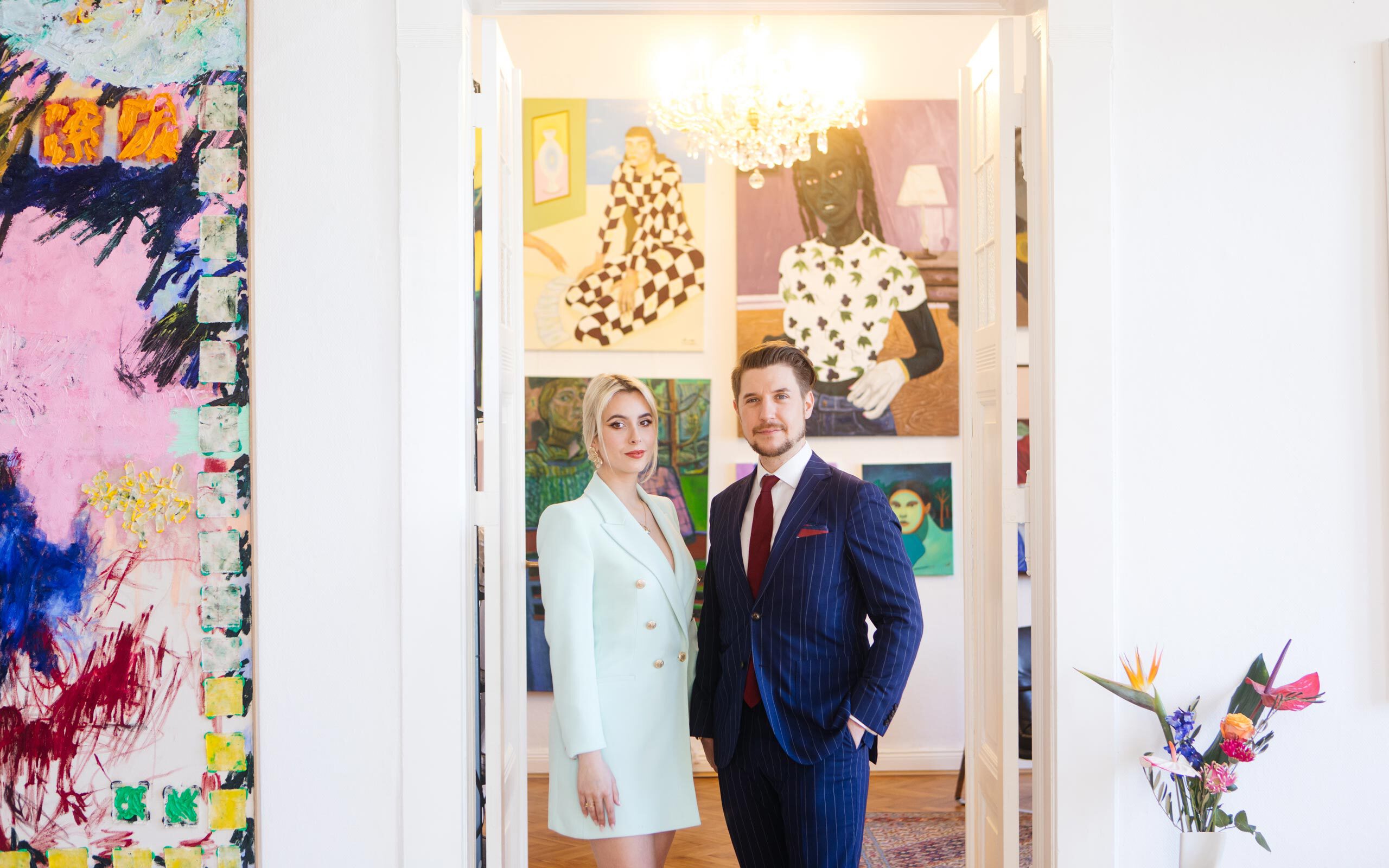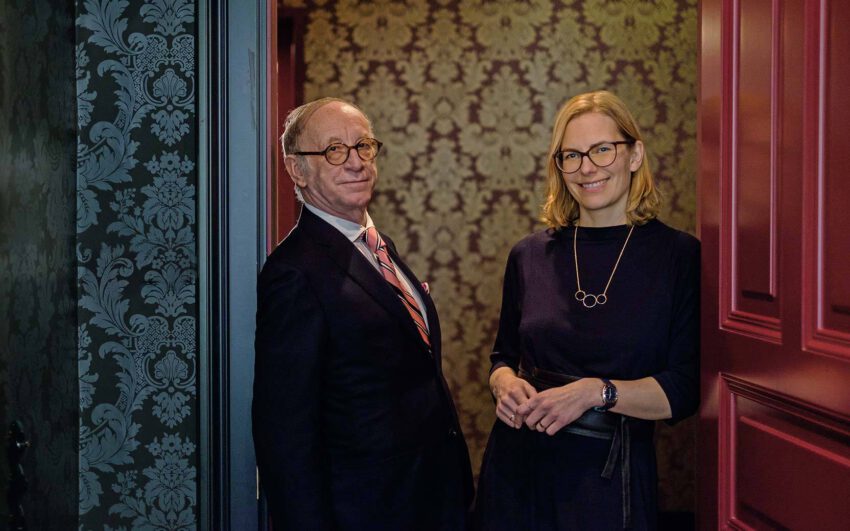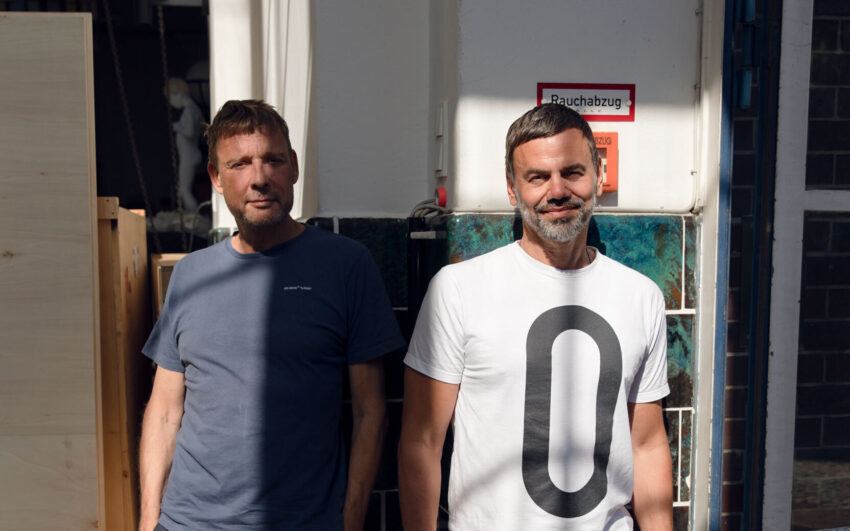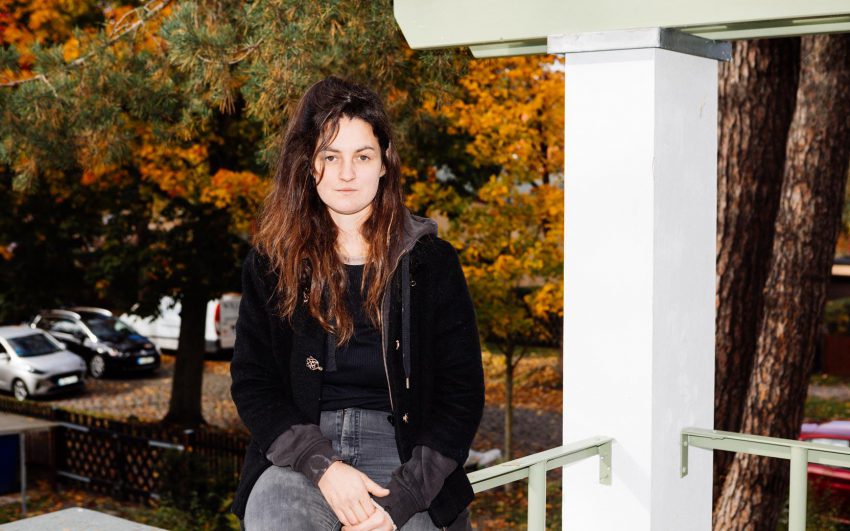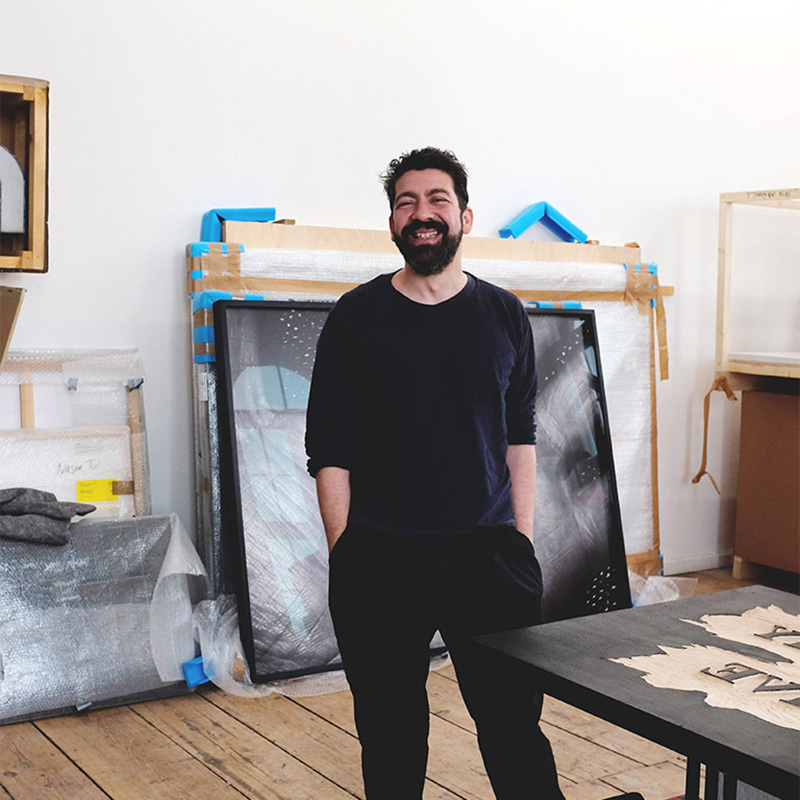Oliver Elst and Laura del Arco are a well-known collector couple based in Berlin and Barcelona. Laura, a fashion designer and art director and Oliver a former car designer, both long term expats in Shanghai, China, entered the world of art collecting several years ago and, since then, have built significant art collections individually and together. Laura founded the Del Arco collection back in 2018, and is focused on supporting artists that explore female and self-representation, identity, belonging and gender portrayal. In her collection she supports female, non-binary and queer visions in the contemporary art landscape. Oliver started collecting in 2016 and his collection was at that time focussed on contemporary African art and its diaspora. In 2020 the collection evolved and opened to include a wider range of artists around the world in which he identifies potential and a unique and characteristic practice.
Laura, Oliver, how did you two meet and how did your shared interest in art develop?
Oliver: Our first date was basically at an art fair. (laughs) I was in Wuhan, China, working for a Chinese car brand as a car designer back then and Laura was working as an art director for a fashion multi-brand company and we met in Shanghai, at a gallery opening for Jean-Michel Othoniel at the Perrotin Gallery, and fell in love during our first conversation.
Laura: From that moment on we went to art events every weekend and spent our whole spare time seeing art. I think one could say that we bonded over this shared art experience.
Was art a topic in your respective families early on or did your interest in art develop later?
O: No, not really. Neither of us are from a family of art collectors.
L: It’s true though that my mother liked to paint. When I was a child she often included me in her painting sessions. In those moments I felt very connected to her and felt comforted. My mother and I then began talking more and more about art. I started to go to museums and collected postcards featuring the paintings that I liked the most in exhibitions I saw. This was my first very humble art collection as it were. My first very humble art collection so to speak. When I moved to China I started going to gallery openings every weekend. This was also a time when I began to buy paintings. At first I was attracted mainly by Chinese contemporary art. I wanted to understand the culture and artistic practices of the country that I lived in. But over time I realized that my actual interest lay in female representation in art, regardless of the artists’ origin. What interested me most was the difference between these female positions and the range of possibilities of artistic expression and character.
O: When I was a teenager I began to sketch, mostly cars, graffiti, comic book figures and later, during university, I also took up painting and nude figure drawings. This led me into the art and design business. At the age of 14, I knew I wanted to become a car designer. With this in mind I applied to the School of Design at Pforzheim University, where I also attended painting classes. With my first job in my early twenties I had some financial means to buy my first artworks. In the course of my career as a car designer, I never lost interest in art, and began collecting while pursuing my profession.
What was the first artwork you bought?
O: I bought two lithographs of Gerhard Richter right after I started in my first job. Lithographs were a good entrance to collecting, but lithographs didn’t give me the feeling of a real work on canvas, so I acquired my first original work: a painting by the American-Ivorian artist Aboudia. Becoming more serious about collecting and focusing on contemporary African art and its diaspora I was asking myself which kind of art really appealed to me and touched me at a deeper level.
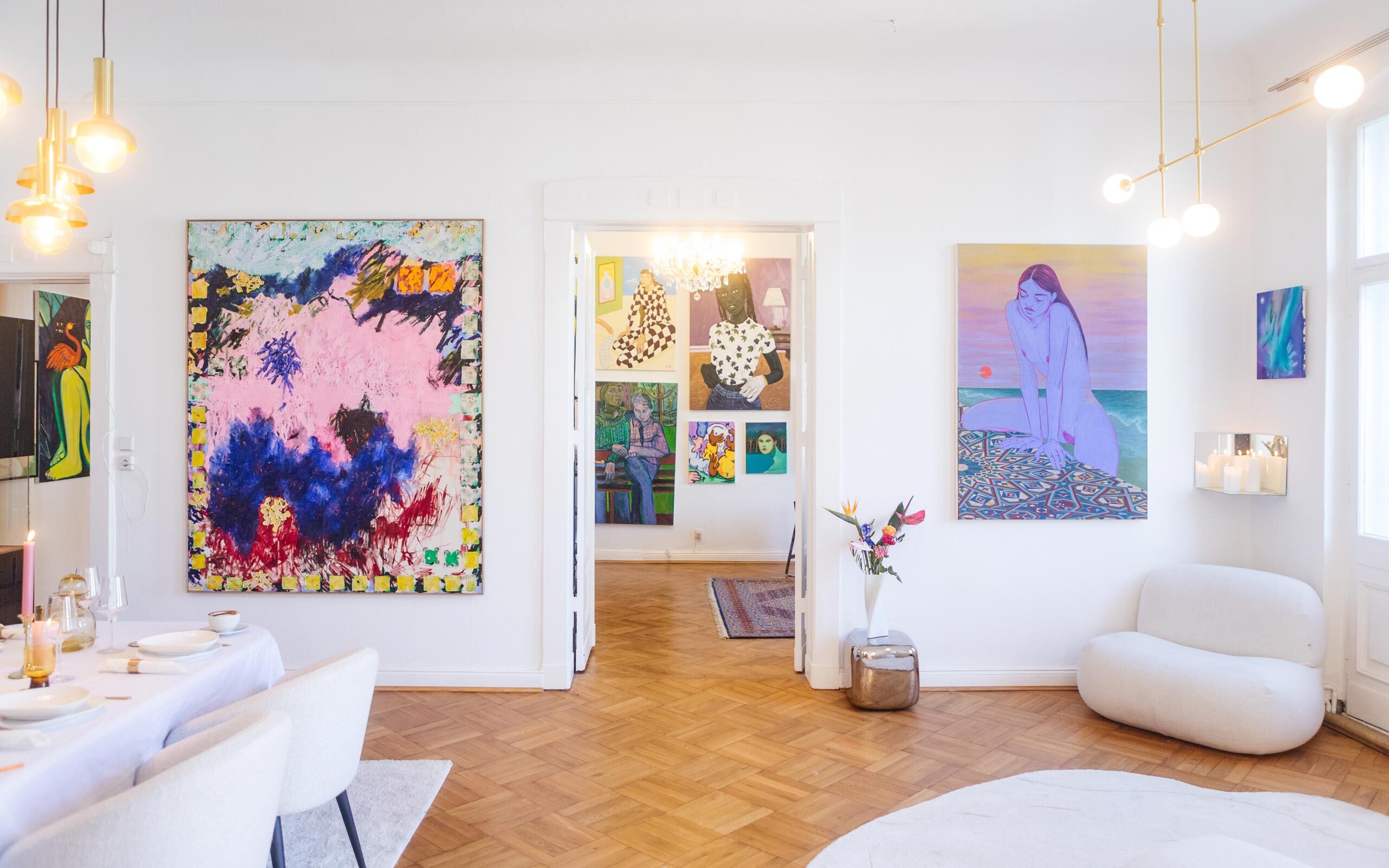
How did your primary focus for the Cuperior collection of art by artists of African origin evolve?
O: My dad was traveling a lot to African countries at the time and I had this picture of Africa in my head. After having done more research I saw a huge potential and opportunity in contemporary African art, because Africa has not really been appreciated as deserving by the art world for a long time. Art by African artists was still quite accessible that time, I saw huge potential for these artists. I loved the diversity in their ways of expression.
You decided to switch from design to open your own art advisory and later exhibit both of your personal collections to the public and open PRIOR Art Space and PRIOR Next Generation. How did that come about?
L + O: In the beginning a lot of friends and collectors were interested in what we were doing with our collections and asked for advice in building their own art collections. We gave them some guidance and shared proposals with works by artists we were coming across in our own research and who we were also collecting. This gave us the idea of founding our own art advisory and after the lifting of lockdown, wanting to take it to real life, PRIOR Art Space and PRIOR Next Generation. Our art spaces aim is through the exhibition of our private collections, the promotion ofemerging artists and to inspire the art collecting practices of the coming generations. The aim is to give voice to internationally and historically underrepresented artists and to bring to the conversation the different visions on concepts that reflect relevant concerns in a contemporary landscape.
Are there relationships between your recommendations as art advisors and your personal collection?
L: We are recommending only artists who we believe in. So naturally we are mediating the work of artists whose artworks we have been collecting ourselves. We are also working closely together with their representing art galleries. It is very important for us in all our relationships that they are based on transparency and mutual trust. Also, that through such a collaboration, we can reach a mutual objective, which is to give visibility and exposure to our artists.
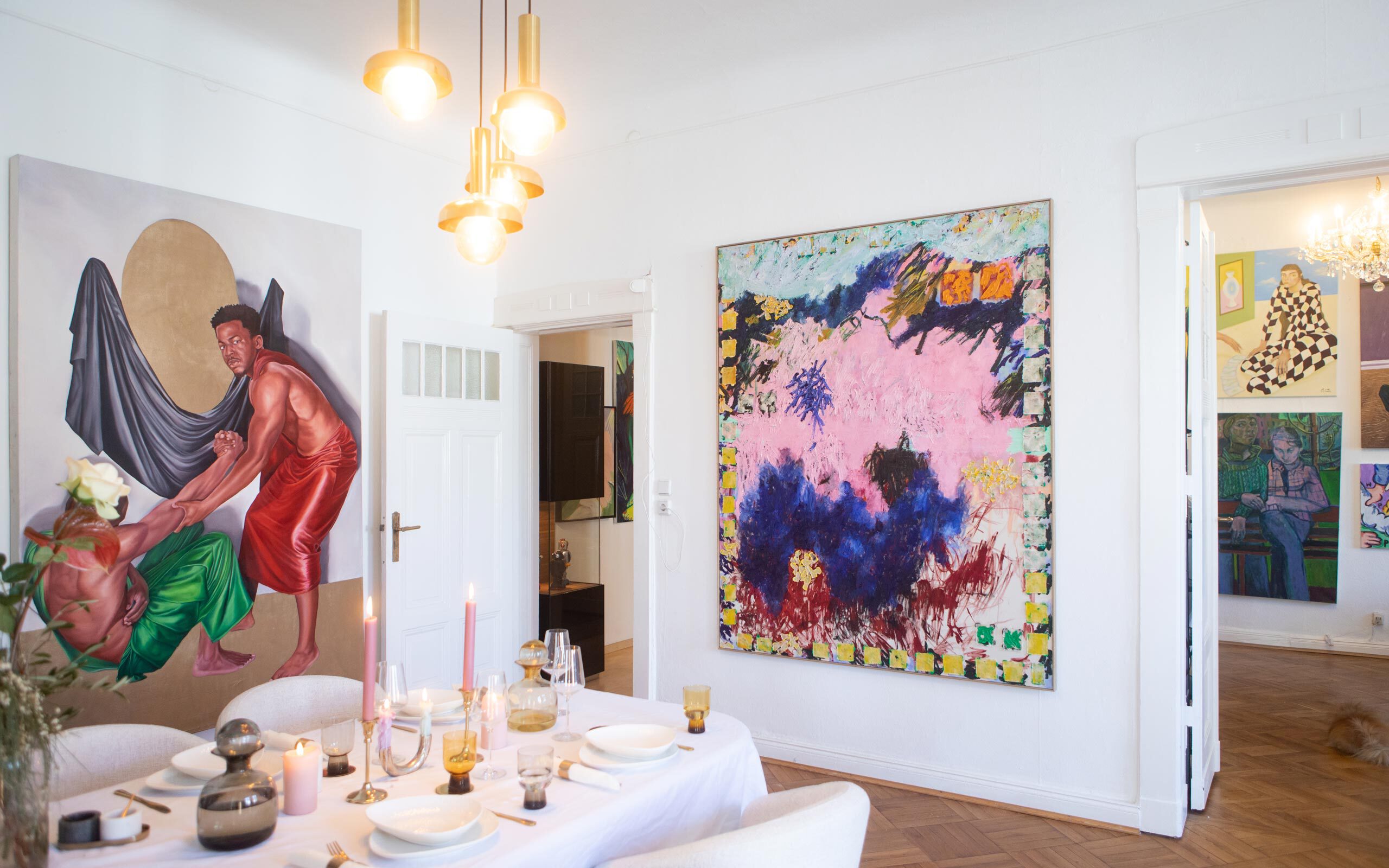
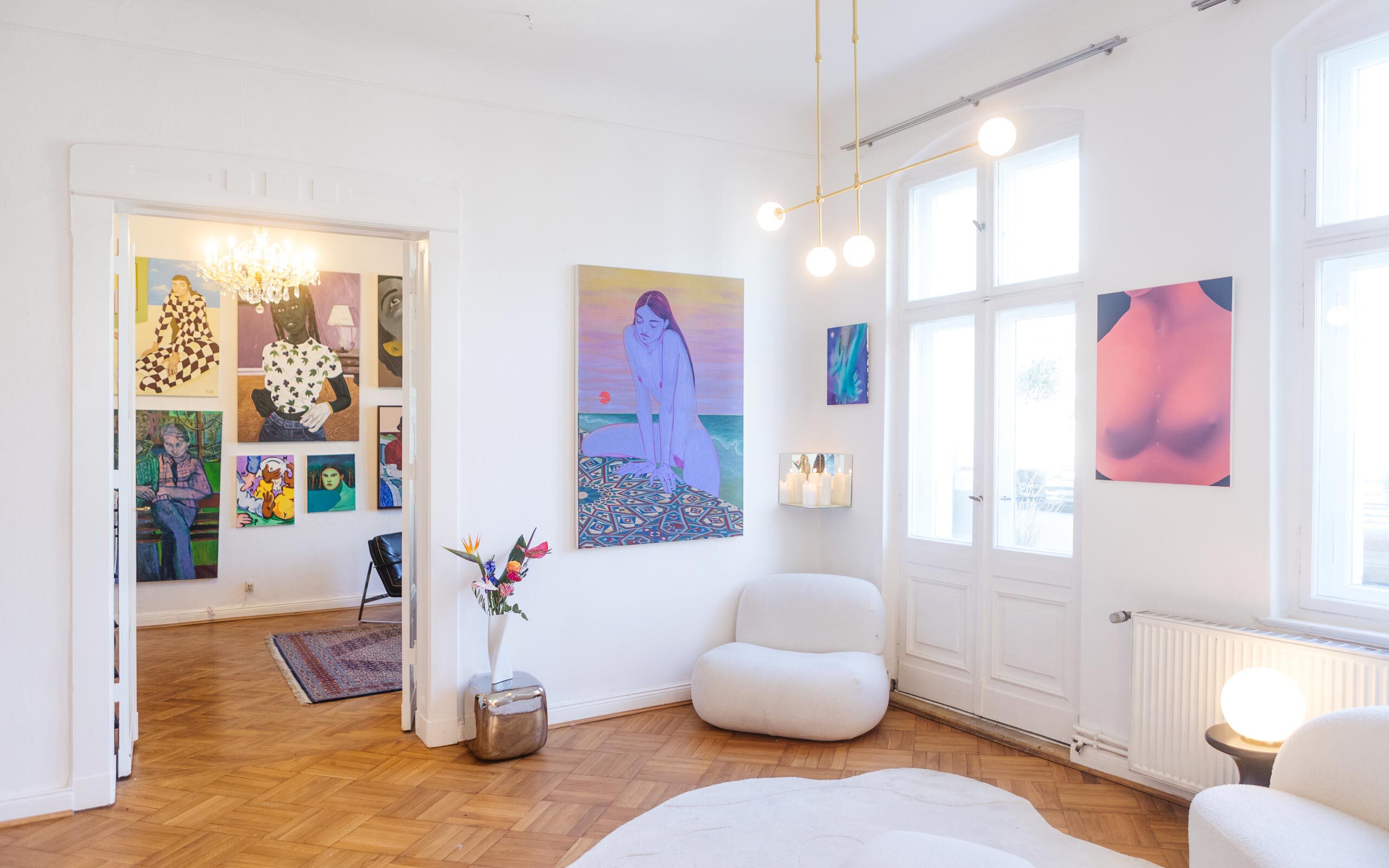
Is the African art scene your exclusive focus as advisors and collectors?
O: Let’s say we have always been interested in underrepresented artists. African American and Latin American artists have historically and internationally been and are still today underrepresented in the institutional context. Therefore we are scouting among others for artistic talents with such a background.
L: We also take an interest in topics of gender identity and the body, both of which are often represented in feminist, non binary and queer art. We're happy to see that these concepts are receiving increasing attention and being part of the general discourse in the international art scene.
Could you describe the process by which you decide to acquire a work of art?
L: I would personally describe it as a form of magic taking place. I need to feel a personal connection. If I come across a work by an artist who deals with the female experience, body, or self-acceptance, or an artist that represents women in a fair and empowering way, then this resonates with my own life and beliefs. It becomes a part of me to the degree that I feel I would like it to become part of my collection.
O: I feel that my eye, at this time, is quite trained to spot potential in the creative expression of an artist. If I am considering buying a new piece, I am trying to picture what role it would play in my collection? What does it add? I have noticed that, subconsciously, I also use the “golden ratio” to judge the quality of an artwork. It is a principle that can be observed in architecture, design, nature, and also in art. It is a ratio that is frequently applied in works of art, whether figurative or abstract. If one looks closely enough, a work can be seen to follow certain rules regarding proportion and positioning.
L: Generally, I believe that the more you see the more discerning your eye becomes in detecting real talent and strong character. The more you see, the more you intuitively recognize the value or potential of an artwork.
How was it to enter the art collecting scene as a young collector?
O: It was very exciting. I read a lot and talked with a many people in the art world, especially other collectors. I also attended a course at Sotheby’s Art Institute to get a deeper understanding of how this opaque market works and how one actually builds a serious collection. It takes a lot of time, but it is very useful to make one’s research and also think about your intention as a collector. To decide the reasons why you want to buy art, if mainly for decoration, from an investment perspective or because you really fell in love with a specific piece or artist. For me, it is also important to connect and build relationships with the artists, the galleries, or other collectors and share thoughts.
L: To be honest, I feel as a young female collector my journey in art has not been as easy. Unfortunately there is not only an establishment in which female artists lack representation institutionally, I also feel there are challenges being a young woman in any area that historically has been male-dominated, and art collecting is also one of them. Ultimately, the most important thing is to collect with passion and the heart and never lose the vision and reasons why art will never be for me only buying works of art, if it is not also a long-term support to artists and a life purpose.
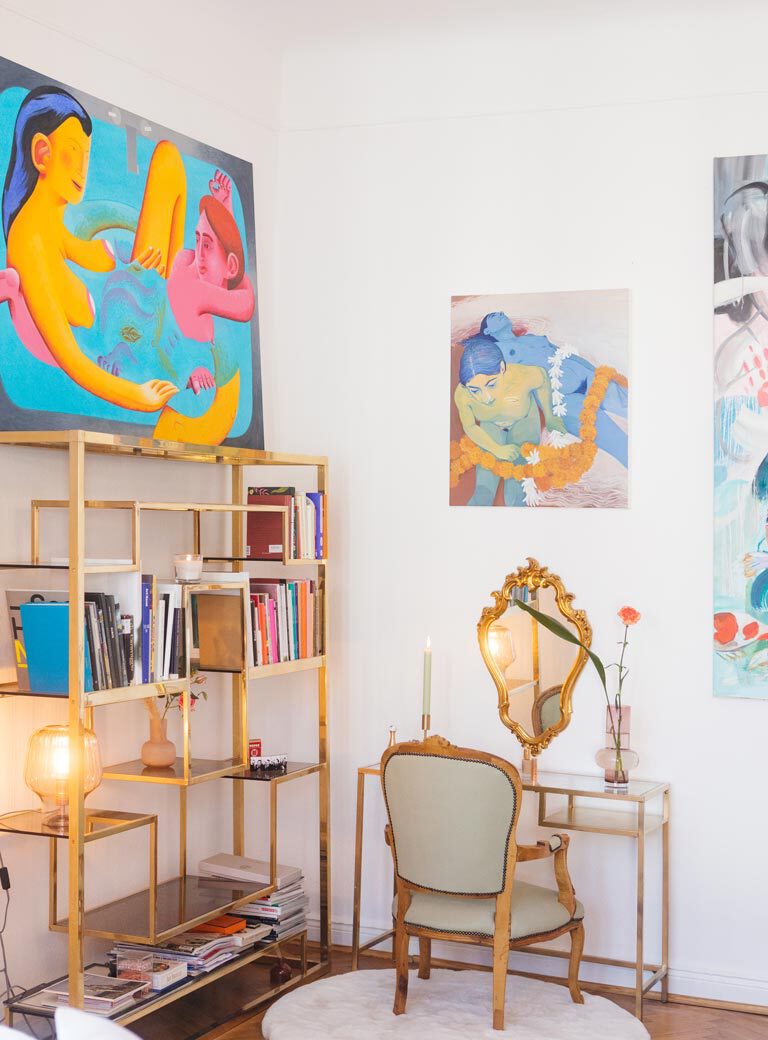
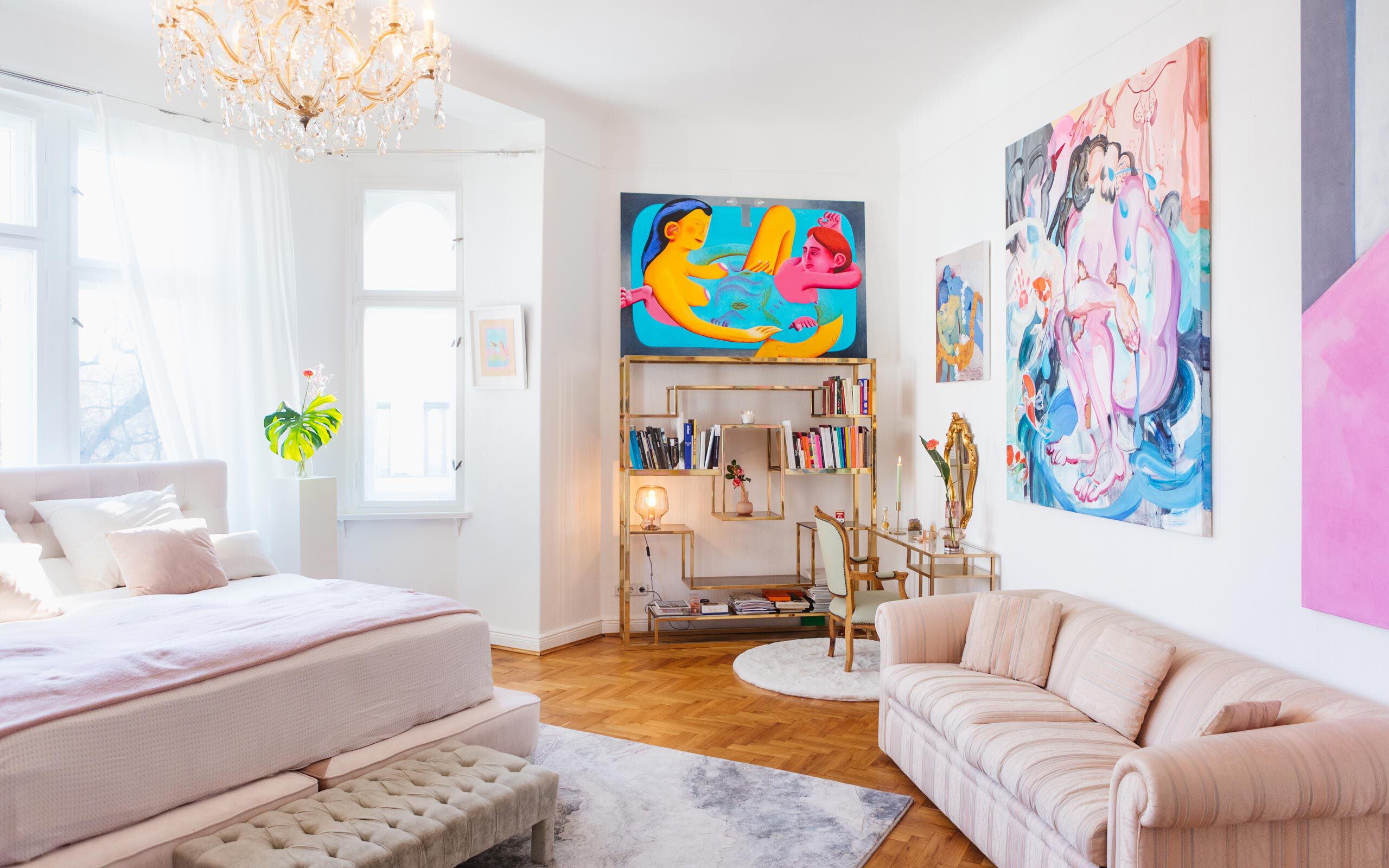
You have recently established a program for displaying your collections and also showing collaborations with artists you collect and international galleries. How did this idea came up?
O + L: When we moved to Berlin from China we felt that a space was needed for emerging artists in which to give them more visibility. Looking at the gallery scene and institutional landscape in Germany we did not get the impression that there was much attention given to fostering underrepresented young artists who are focusing on the immediate topics of our time. So we wanted to create something different and new for artists with bold contemporary ideas.
Which artists can you recommend?
L: Faye Wei Wei, Bambou Gili, Grace Mattingly, Nadia Waheed, Kristy M Chan, Vivian Greven, Jeanine Brito, Daisy Parris, Elisabeth Glaessner, Hiba Schahbaz, Katja Farin… and many more.
O: Tyler Ballon, Cinga Samson, Matthew Eguavoen, Igor Moritz, Ian Michael, Sikelela Owen, Cornelius Annor, No Martins, Isaac Mann, Tahnee Lonsdale, Giorgio Celin, Olivia Sterling and many more.
How is your exhibition space in Berlin and Barcelona structured?
O + L: The space is comprised of two rooms each on a separate floor and each of which has a different purpose. One floor is where we display works from our private collection and is open to the public in changing curated exhibitions. The other floor is our collaborative space in which we curate changing exhibitions of new works by artists we collect and support and is organized around relevant concepts and in collaboration with befriended international galleries, curators, and artists. The idea with this/here is to promote the art collecting practice to new generations.
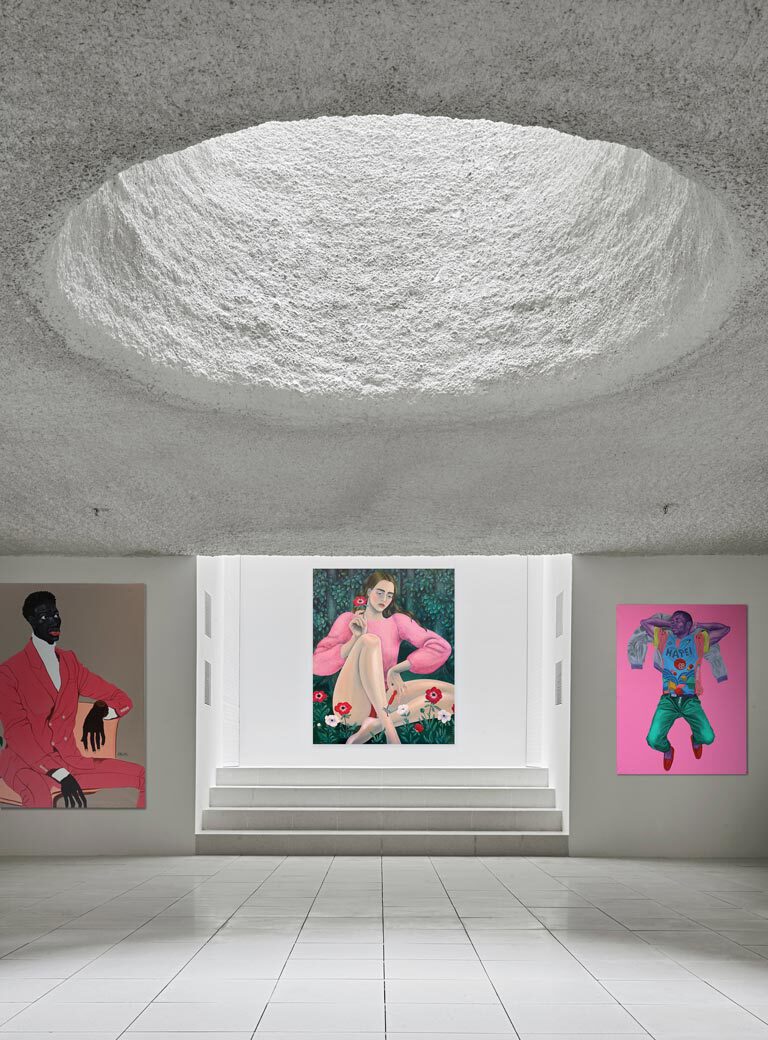
Art has really entered your life. Can you put into words what art means to you?
L: For me art directs our view and explains the impossible, the invisible or the unspoken. Sometimes it needs the sensibility of an artist and her or his particular way of perceiving the world in order to make us aware of something, or to look at something in a completely different way and to really understand it possibly for the first time.
O: For me, art means absolute freedom. Artists must have uncompromised freedom to follow their intuition, or their inner desire to show something to the world while expressing it an a way of their choice with no restrictions or taboos.
The art market is changing with digitalization. And a new generation of collectors like yourselves is joining the art scene. How are you both observing these dynamics?
O: The online market has a huge potential, especially for the young generation of collectors comfortable and familiar with buying in a digital space. Today completely different media are available to research and consume art, such as Instagram. It has never been so easy to learn about new artists and immediately get in touch with them. Twenty years ago one could only meet artists by going to the opening of shows or to seek she or he out in the studio. This has radically changed the art sector.
L: Younger collectors are more open to buying art they come across via digital channels, for example an Instagram posting or a PDF with a list of works a gallery sends us. I am doing a lot of online research myself and have bought several pieces that way. For me, as a collector, it broadens my opportunities to expand both my knowledge and my collection.
Doesn’t the digital experience fall short of the physical art experience?
O + L: When you have a trained eye and possess at least a little experience of techniques, art history and the creation of art works, I believe you can build a connection with an artwork also digitally and imagine how it will look like physically. You can either feel it or not.
Talking about digital, are you interested in collecting NFTs?
O: No, not personally. We have some artists who are creating NFTs in our exhibition space, but it is not in the area of our personal interest, we simply wanted to provide them with a stage. Also it is not our personal interest we wanted to give them a stage.
L: However, although we think it is a very interesting market and is likely going to change the art market significantly, we have been unable to form a connection with NFTs; our focus remains with paintings. We just love this genre and believe that we cannot attach the same kind of emotional connection to a digital piece of art as we do to a physical painting.
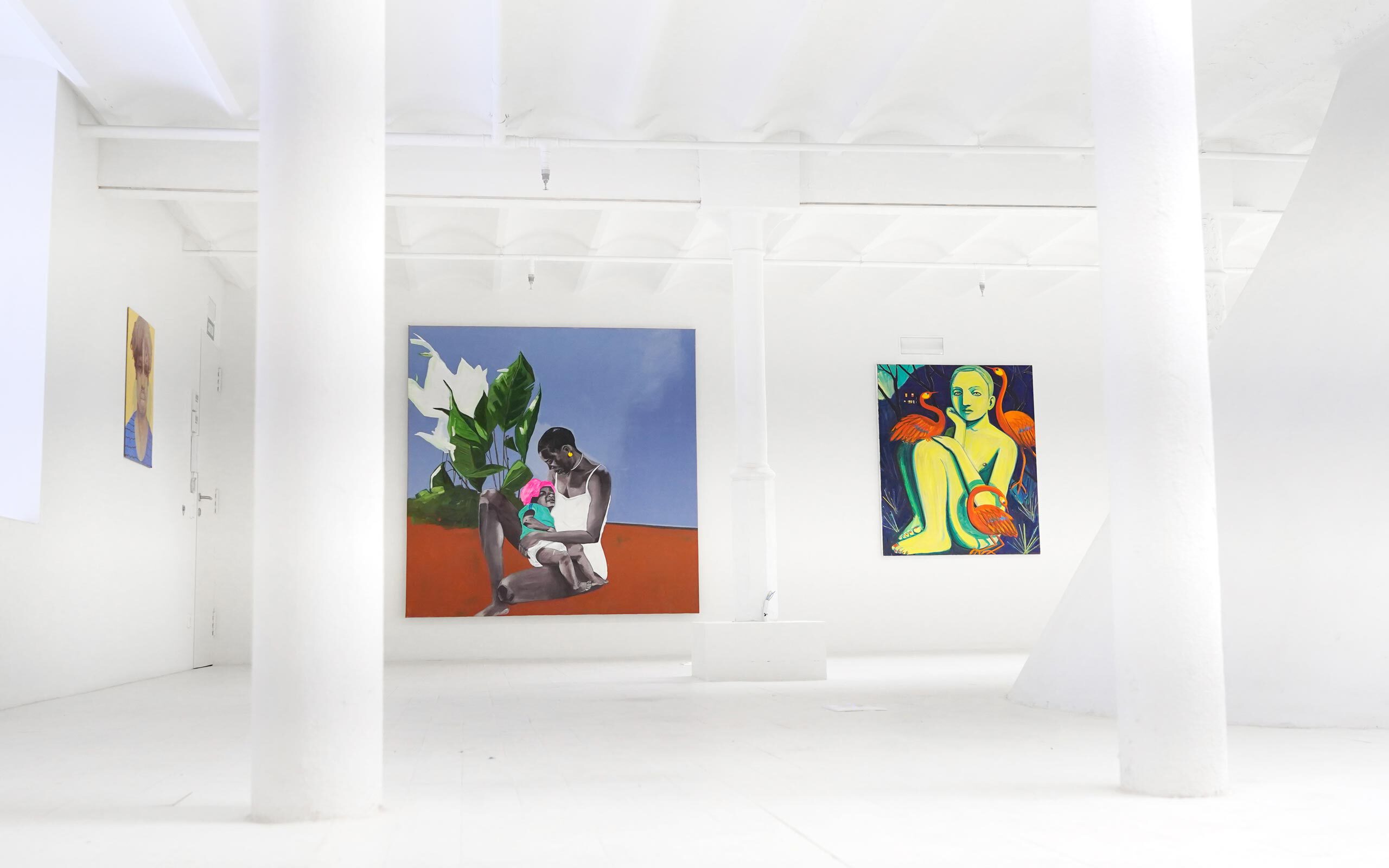
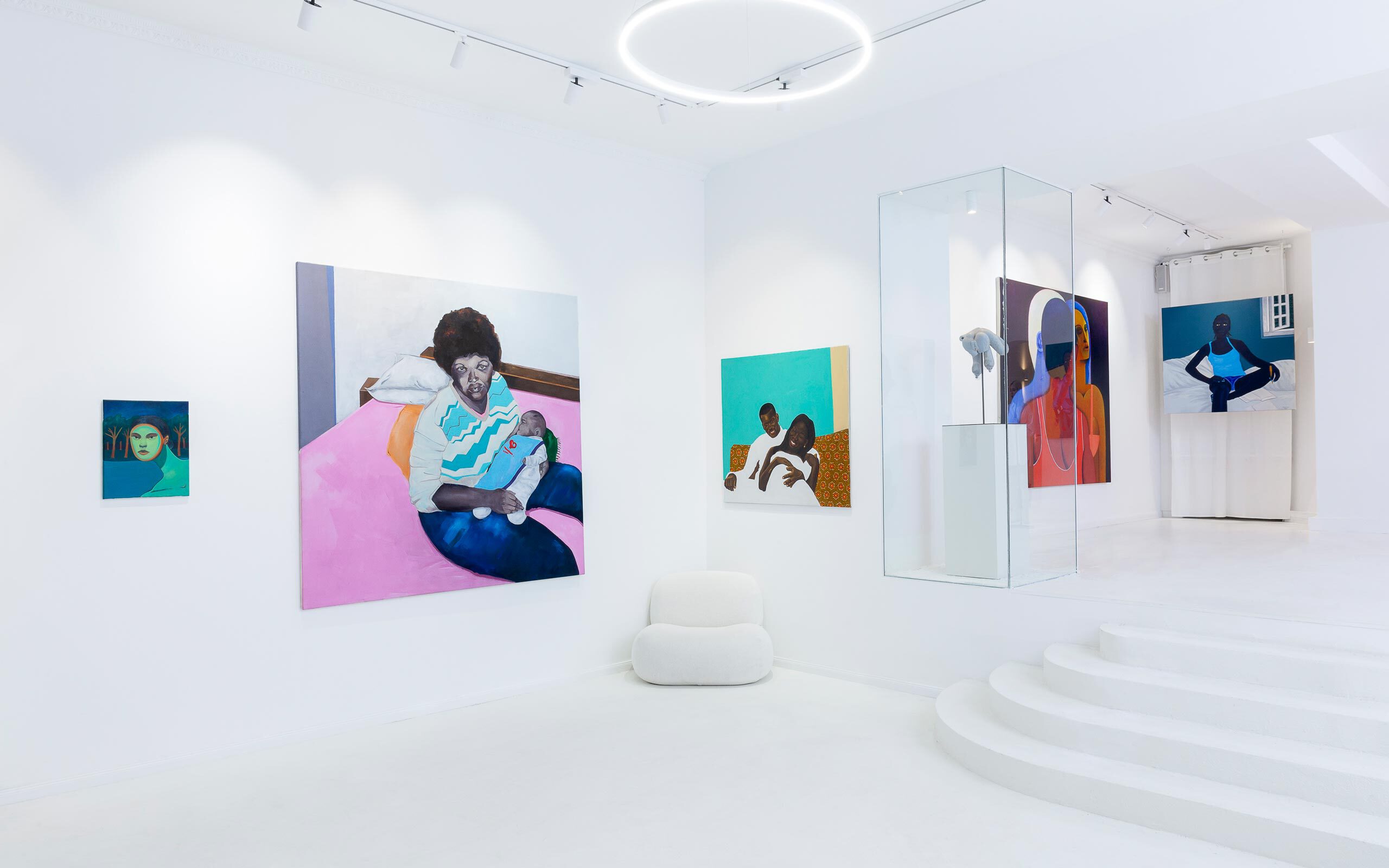
You are very active in the art scene and it is hard to imagine that you will settle with the status quo for long. What are your next projects and exhibitions?
L: We want to continue collaborating with institutions who are working with us to give more visibility to the artists we believe in.
O: We are looking at opening spaces in different art scenes in Europe, maybe in Africa and China at some point.
L: We are also working on our residencies, which we want to expand upon in the coming year. Right now we have Kristin M. Chan from Hong Kong, an abstract artist in my program. She worked in Berlin for three months and after finishing her residency, she has had a solo show in our space.
O: And also Craig Cameron-Mackintosh, a South African artist from Cape town. He had been with us for two months until May, in Berlin, where we had an exhibition showing around eight new works by him.
L: We also want look into creating some kind of scholarship. We think that this is needed more and more. We are collaborating with different art agencies and associations in Nigeria and Ghana, who are representing a lot of young artists, many of whom are extremely talented but don’t have a studio or cannot afford to go to university. We want to create support structures that will help these artists develop their practice and get the attention by the art community that they deserve.
To close do you have a piece of advice you’d like to share with young collectors?
L+O: It is always great to see more young people getting into collecting and developing a passion for art. Our advice would be: Train your eyes, be critical, and always listen to your gut feeling.
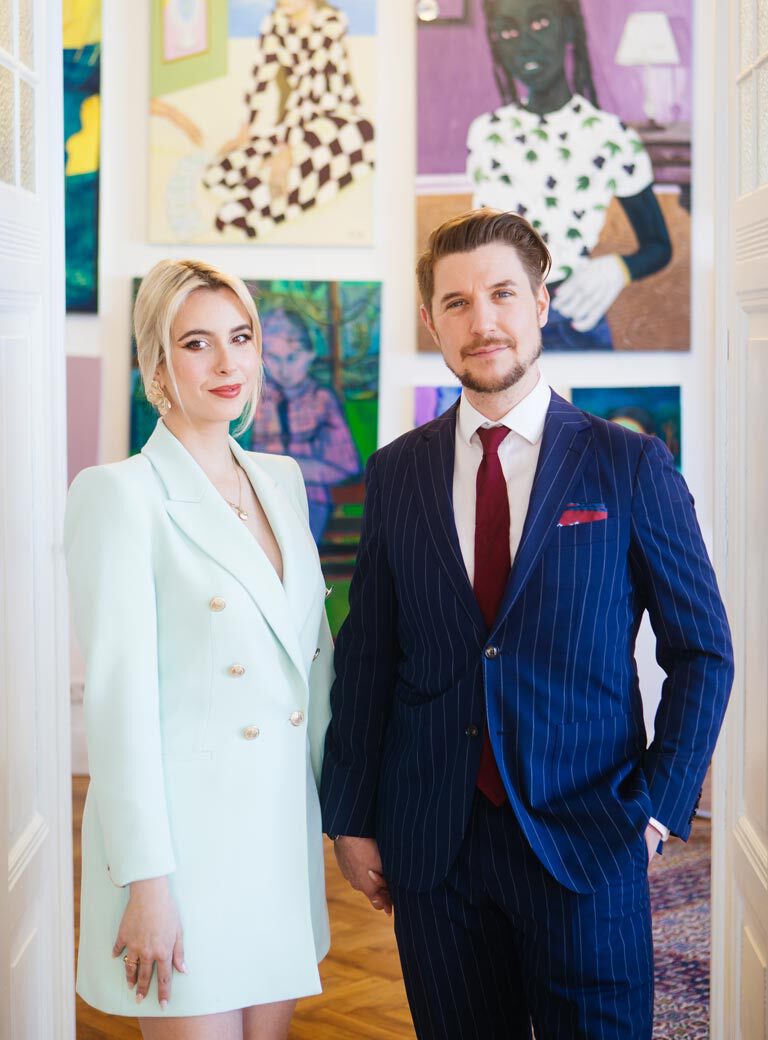
Interview: Kevin Hanscke
Photos: Nora Heinisch


